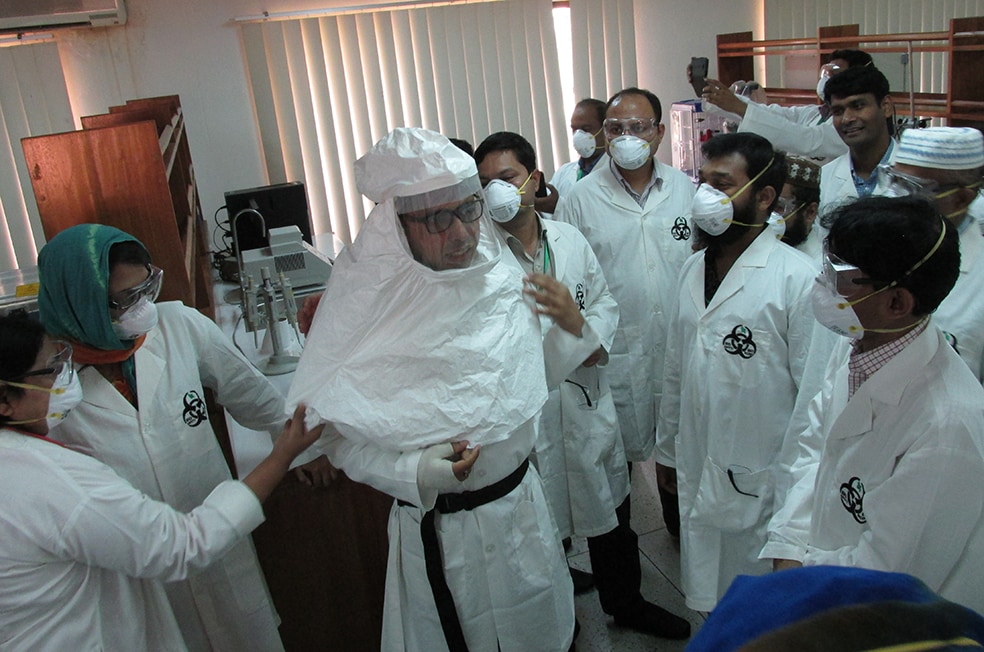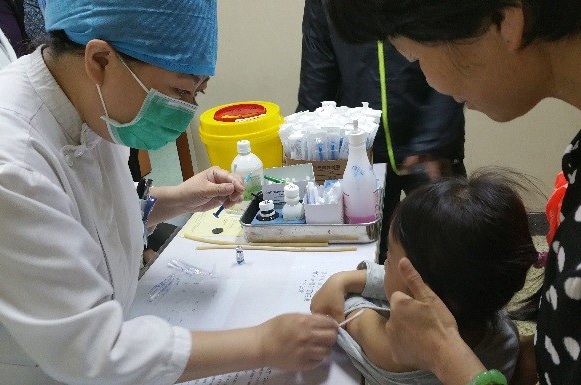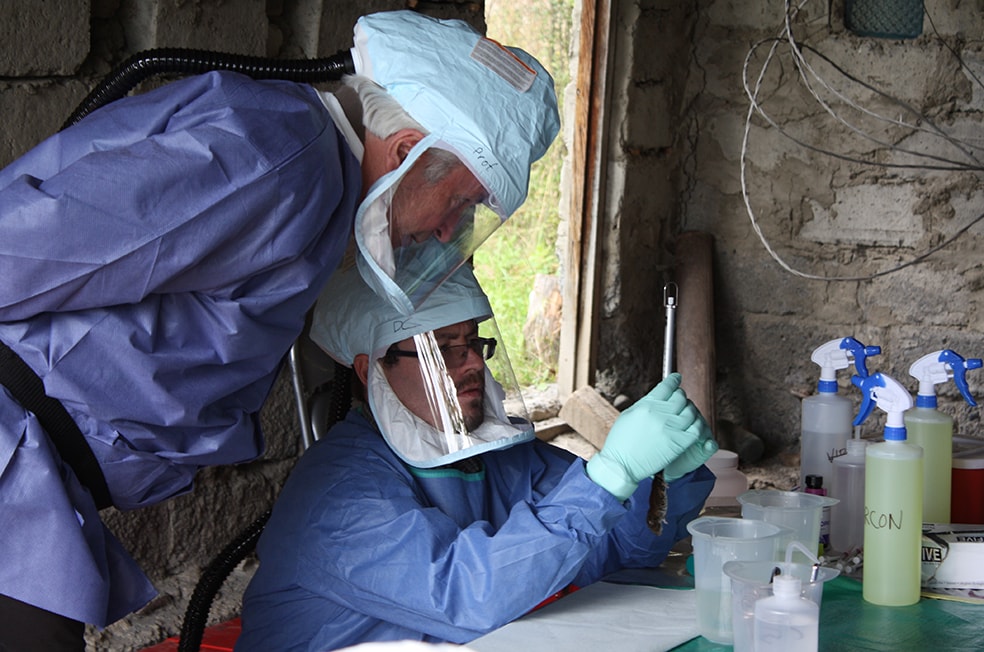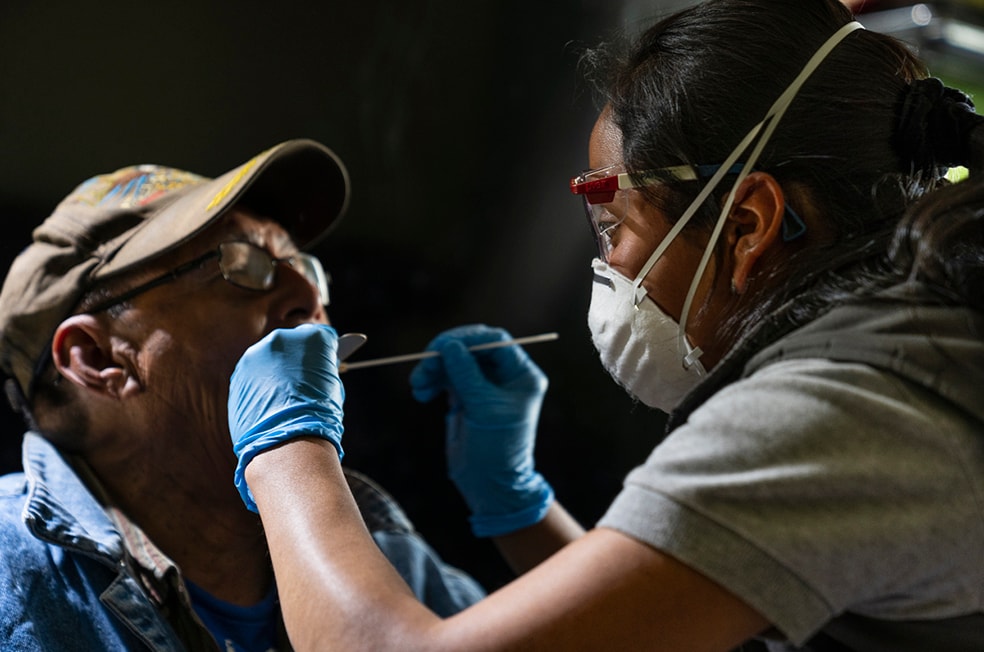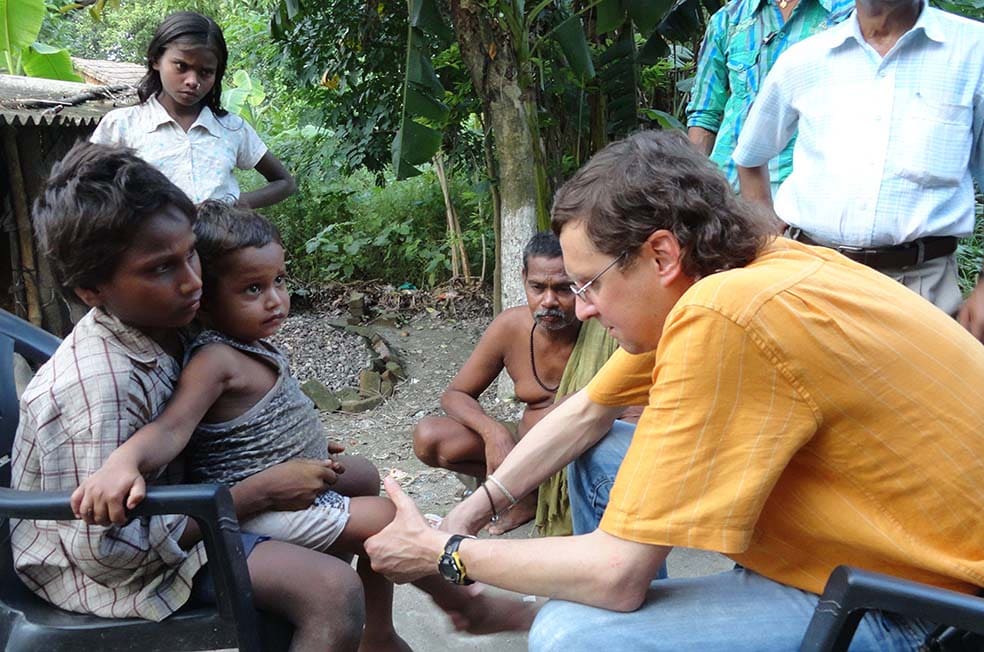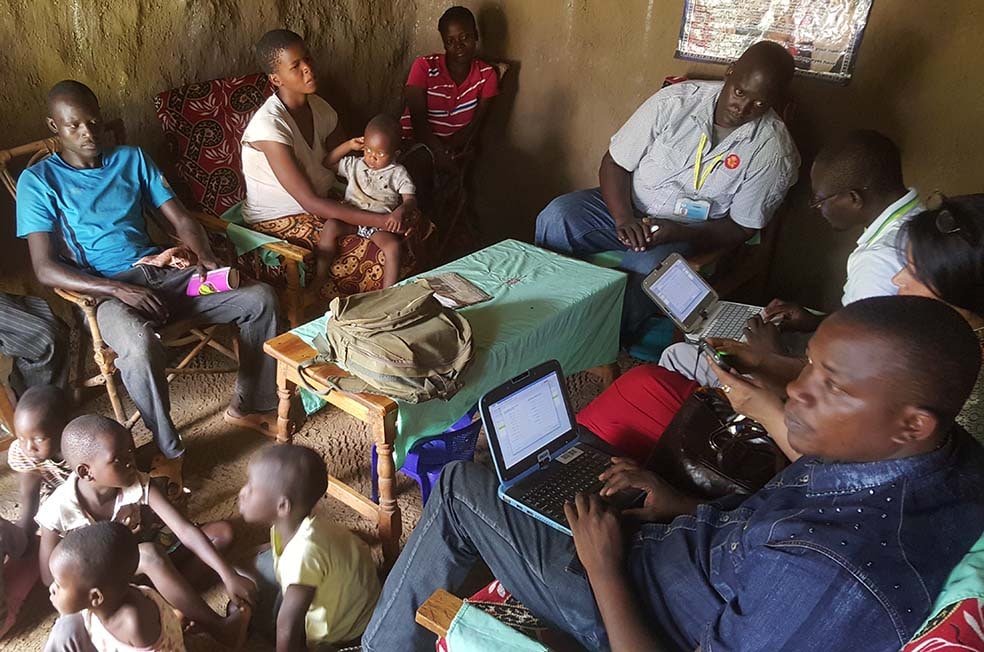Global Disease Detection (GDD) Program:
2004-2018 History and Accomplishments
Background
For over a decade, the Global Disease Detection (GDD) Program built global health security capacity to respond to infectious disease threats and protect American lives by helping countries meet their commitments to the International Health Regulations (2005).
The GDD Program was created by the U.S. Congress in 2004 in response to the severe acute respiratory syndrome (SARS) pandemic and was designed to gather resources so countries could prepare for potential infectious disease threats.1,2 The program harnessed CDC expertise to work with partners including ministries of health, nongovernmental organizations, the private sector, and other U.S. government agencies. Specific activities included developing surveillance and laboratory capacities for key diseases to improve health outcomes, limiting disease spread, and building collaborative workforce development programs such as the Field Epidemiology Training Program.
History and Approach
The ten international GDD Regional Centers (RCs) were established between 2004 and 2013 in Thailand, Kenya, Guatemala, Egypt, China, Kazakhstan, Bangladesh, India, South Africa, and Georgia.
The GDD Program engaged with ministries of health and other implementing partners to improve the local capacity in technical areas such as epidemiology, emergency management and response, laboratory biosafety and biosecurity, quality management systems, and level-appropriate diagnostic methodologies. Widely recognized as public health experts, GDD Program staff regularly worked with regional partners to provide fast and reliable support to contain and stop outbreaks before they spread.
The GDD Program supported country capacity building needs, while providing detailed technical assistance for outbreak investigations. The GDD Program successfully mobilized CDC subject matter experts around the agency to support outbreak response activities and worked collaboratively on public health research studies to improve understanding of the causes and burden of disease. These international centers were resources for neighboring countries and worked to improve public health regionally through scientific evidence-based capacity building activities and partnerships with countries.
GDD Regional Centers and Countries receiving Technical Assistance* (2016-2018)
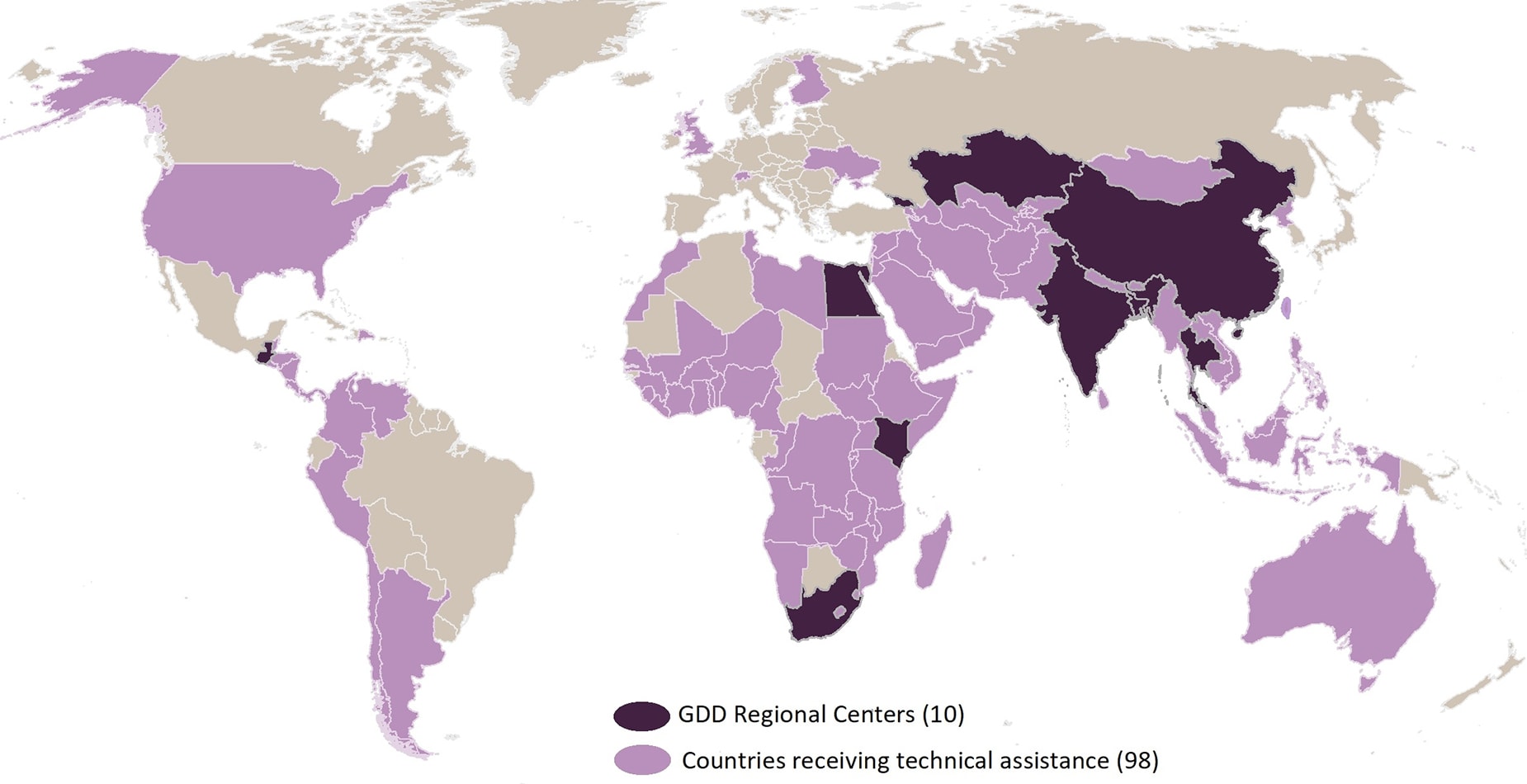
*CDC’s GDD Regional Centers worked in partnership with ministries of health and other organizations
Outbreak Response
Between 2006 and 2018 the GDD Regional Centers (RCs) responded to 2,377 outbreaks and events in 62 countries for diseases and illnesses which included gastrointestinal, respiratory, vaccine-preventable, hemorrhagic, neurological, and zoonotic diseases. Technical assistance provided during these outbreaks and events included boots-on-the-ground field response, the introduction of laboratory diagnostic tests, and emergency response assistance to other public health emergencies, such as natural disasters. Sixty-two percent of requests for assistance to GDD RCs were acknowledged and responded to within 24 hours. An additional 19% of responses occurred within 25 to 48 hours. GDD RCs also worked to improve laboratory capacity during outbreaks to quickly identify and respond to pathogens of public health significance in countries and within the region. Sixty-seven percent of outbreaks received laboratory support and 83% of outbreaks that received laboratory support found the cause of the outbreak.
Developing the Capacity to Prevent, Detect, and Respond to Emerging Threats
The GDD Program, working in partnership with ministries of health, agriculture, and other key national and regional partners, helped build a global health workforce to improve the quality of epidemiology and laboratory sciences, thus improving country capacity to prevent, detect, and respond to new threats. From 2006 to 2018, GDD Regional Center staff and partners held nearly 4,000 training sessions and trained more than 131,500 health care and public health professionals in a range of topics including, but not limited to:
- Epidemiology, Surveillance, and Laboratory
- Emergency Management
- Health and Risk Communication
Strengthening Public Health Laboratory Systems
The GDD Program helped countries develop robust public health laboratory networks focusing on building capacity around specimen collection and management, quality management systems, and biosafety and biosecurity. Technical assistance was provided to laboratories at the national, regional, and district levels, and support was provided to local universities and both public and private hospitals.
Year
Year
GDD Center
GDD Center
Pathogen Name
Pathogen Name
Pathogen Name
2007
2007
Thailand
Thailand
Bartonella tamiae
Pathogen Name
Bartonella tamiae
2010
2010
Egypt
Egypt
Novel Vibrio cholera genotype
Pathogen Name
Novel Vibrio cholera genotype
2010
2010
Egypt
Egypt
Novel Crimean Congo hemorrhagic fever
Pathogen Name
Novel Crimean Congo hemorrhagic fever
2010
2010
Kenya
Kenya
Bartonella novel species from bat flies
Pathogen Name
Bartonella novel species from bat flies
2011
2011
Kenya
Kenya
Rickettsia asemboensis (candidate species)
Pathogen Name
Rickettsia asemboensis (candidate species)
2011
2011
Thailand
Thailand
Bartonella vinsonii subsp. vinsonii
Pathogen Name
Bartonella vinsonii subsp. vinsonii
2011
2011
Guatemala
Guatemala
Influenza virus A/Hi&N10
Pathogen Name
Influenza virus A/Hi&N10
2011
2011
Guatemala
Guatemala
Bartonella desmodus (candidate species)
Pathogen Name
Bartonella desmodus (candidate species)
2013
2013
Georgia
Georgia
Novel Zoonotic orthopoxvirus (Akhmeta virus)
Pathogen Name
Novel Zoonotic orthopoxvirus (Akhmeta virus)
2014
2014
China
China
Clostridium difficile (novel hypertoxigenic strain)
Pathogen Name
Clostridium difficile (novel hypertoxigenic strain)
2014
2014
Kenya
Kenya
Novel rhabdovirus (Fikirini rhabdovirus)
Pathogen Name
Novel rhabdovirus (Fikirini rhabdovirus)
The GDD Program strengthened laboratory capacities, mostly through technical assistance for
- Implementing quality management system to support accreditation and certification
- Developing laboratory diagnostic testing capacity
- Conducting laboratory facility assessments and advising on laboratory design
Building the Evidence Base for Global Health Security
The GDD Program committed to documenting advances in scientific knowledge and the impact that program and partners were having on global public health. In collaboration with subject matter experts from CDC and around the world, 1,065 articles were published in the scientific and peer-reviewed literature on topics such as respiratory illness, public health capacity strengthening, and antimicrobial resistance.
During 2017-2018 alone, the GDD Program published 179 peer-reviewed articles covering anthrax, avian influenza, brucellosis, gastrointestinal diseases, MERS-CoV, multi-drug resistance, nipah virus, rabies, Rift Valley fever, scrub typhus, tuberculosis, and vaccine preventable diseases. Several publications covered international multi-site network studies such as the Pneumonia Etiology Research for Child Health (PERCH) study, Global Enteric Multicenter Study (GEMS), and the WHO Global Foodborne Infections Network.
Not only did the GDD Program support the advancement of scientific knowledge through journal publications, but it also worked with ministries of health to develop policy and guideline documents. During 2017 and 2018, the GDD Regional Center staff helped create 132 products including laboratory methods documentation, protocols ensuring standard processes in disease, curriculum development for rapid response team trainings, and guideline development for national laboratory strategic plans. The most common products were
- Position papers/editorials: 22%
- Guideline development/revision: 21%
- Standard operating procedures: 18%
- Protocols: 13%
- Policy documents: 8%
- Training modules: 4%
The GDD Program is part of a long and significant history at CDC of protecting public health globally. Global health is constantly changing, and the work started by GDD is not finished. As part of global health security, CDC will continue to work with countries to develop the capacities and systems that are sensitive enough to signal a new health threat, specific enough to pinpoint problems and focus resources, and flexible and connected enough to protect the world’s economic and social wellbeing. Lessons learned through the lens of the GDD Program offer CDC and countries a way forward as we continue to work to keep our nation and our world safe, healthy, and secure.
- Montgomery et al. Ten years of global disease detection and counting: program accomplishments and lessons learned in building global health security. BMC Public Health 2019, 19(Suppl 3):510-518.
- Rao CY, Goryoka GW, Henao OL, Clarke KR, Salyer SJ, Montgomery JM. Global Disease Detection—Achievements in Applied Public Health Research, Capacity Building, and Public Health Diplomacy, 2001–2016. Emerg Infect Dis. 2017;23(13).
